206 scholarly books by Arc Humanities Press and 17
have author last names that start with M
206 scholarly books by Arc Humanities Press and 17
206 scholarly books by Arc Humanities Press
17 have author last names that start with M have author last names that start with M
17 have author last names that start with M have author last names that start with M
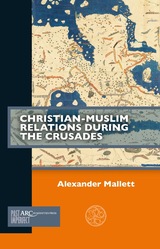
Christian-Muslim Relations during the Crusades
Alex Mallett
Arc Humanities Press, 2023
The popular view of the Crusades is that of two zealous armies ranged against each other in a state of practically permanent warfare, lacking mutual respect, understanding, or co-operation. Scholars long ago replaced such ideas with a much more nuanced understanding, in which rulers from both sides could work together for mutual benefit, even while pretending to ascribe to the principles of crusade and jihad. This perspective, however, focused almost exclusively on the actions of the elites; the attitudes of those who made up the vast majority of the society in the Levant have been all but ignored.
In a clear and accessible form, this book explores everyday relations and interactions between Christians and Muslims in the Levant during the Crusades, demonstrating that it was usually practicality rather than religious scruples that dictated their responses to the religious other.
[more]
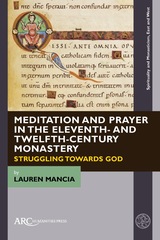
Meditation and Prayer in the Eleventh- and Twelfth-Century Monastery
Struggling towards God
Lauren Mancia
Arc Humanities Press, 2023
This book explores the dimensions of medieval monastic meditation, prayer, and contemplation in the heyday of Benedictine and Cistercian spiritual writing, the eleventh and twelfth centuries. Mancia aims to answer the following questions: What did extra-liturgical prayer and meditation look like for medieval monks and nuns in western medieval Europe? When, where, and how was it practised? Was there a set way to engage with monastic meditation, or were there a variety of medieval monastic meditative experiences in the eleventh and twelfth centuries? What did monks and nuns perceive as the limitations of monastic prayer and meditation, and how did they understand their own imperfections and failures to perform "perfect" devotion? What extra-textual tools—art, manuscripts, diagrams, spaces—did monks and nuns rely upon to stimulate their practices of meditation? What does monastic meditation reveal about the emotional lives of Benedictine and Cistercian monks and nuns in the high Middle Ages? And, finally, what does the monastic struggle to pursue a prayerful Christian life have to teach the secular world of the twenty-first century?
[more]
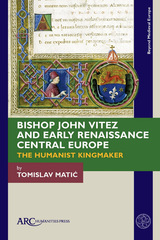
Bishop John Vitez and Early Renaissance Central Europe
The Humanist Kingmaker
Tomislav Matić
Arc Humanities Press, 2022
This comprehensive biography of John Vitez, an instrumental figure of the Early Renaissance, presents a complex picture of cultural, political, and religious developments in Central Europe through one man’s life. Drawing on close study of Vitez’s writings and his various political and artistic networks of influence, Tomislav Matić demonstrates the wide scope of this church leader’s involvement in late medieval Central Europe. Not only were Vitez’s writings a catalyst for the introduction of humanism across the region, he was a patron of the arts, an avid astrologer, a master diplomat, and even a kingmaker, thus central to both political and cultural developments.
[more]
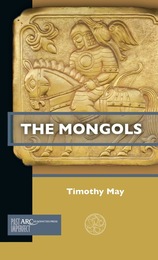
The Mongols
Timothy May
Arc Humanities Press, 2019
The Mongols emerged from obscurity to establish the largest contiguous empire in history. Although they are now no longer viewed as simply an unbridled force of destruction, it remains unclear as to how they succeeded in ruling a empire that stretched from the Sea of Japan to the Black Sea. This book investigates how the Mongol adopted and adapted different ruling strategies from previous Inner Asian empires as well as Chinese and Islamic Empires to rule an empire in which they were a distinct minority, and also investigates the processes by which this empire fragmented into an increasing number of states, many of which lasted into the seventeenth and eighteenth centuries.
[more]
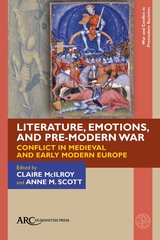
Literature, Emotions, and Pre-Modern War
Conflict in Medieval and Early Modern Europe
Claire McIlroy
Arc Humanities Press, 2021
This collection assembles work by some of the foremost English-speaking scholars of pre-modern thought and culture and is the fruit of the Australian Research Council's ground-breaking Centre of Excellence for the History of Emotion. The impact of war, a human activity that is both public and politically charged, is examined as it affects private human lives caught up in public and political situations. The essays, many of them influenced by the burgeoning field of study in the history of emotions, examine the often unconsidered effects of war—on the individual and on the commune—as revealed in the study of well-known texts such as Beowulf, Piers Plowman, Malory’s Le Morte Darthur, and Chaucer’s Troilus and Criseyde, as well as other lesser-known works that mirror the concerns of the society in which they were conceived. These latter range from the twelfth-century chansons of the Crusades, through the fifteenth-century French and English political works of Alain Chartier, to the twentieth-century anti-war satirical films of Mario Monicelli.
[more]
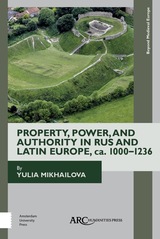
Property, Power, and Authority in Rus and Latin Europe, ca. 1000–1236
Yulia Mikhailova
Arc Humanities Press, 2018
This book intertwines two themes in medieval studies hitherto kept apart: comparisons of Latin and Orthodox Europe and the "feudal revolution" of the late- and post-Carolingian periods. The book broadens the debate by comparing texts written in "learned" and "vulgar" Latin, Church Slavonic, Anglo-Norman, and East Slavonic. From this comparison, the Kingdom of the Rus appears as a regional variation of European society. This suggests current interpretations overemphasize factors unique to the medieval West and overlook deeper pan-European processes.
[more]
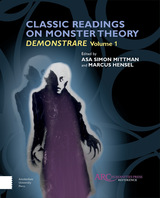
Classic Readings on Monster Theory
Asa Simon Mittman
Arc Humanities Press, 2018
Companion volumes <i>Classic Readings on Monster Theory</i> and <i>Primary Sources on Monsters</i> gather a wide range of readings and sources to enable us to see and understand what monsters can show us about what it means to be human. The first volume introduces important modern theorists of the monstrous and aims to provide interpretive tools and strategies for students to use to grapple with the primary sources in the second volume, which brings together some of the most influential and indicative monster narratives from the West.
[more]
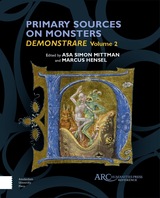
Primary Sources on Monsters
Asa Simon Mittman
Arc Humanities Press, 2018
Companion volumes <i>Classic Readings on Monster Theory</i> and <i>Primary Sources on Monsters</i> gather a wide range of readings and sources to enable us to see and understand what monsters can show us about what it means to be human. The first volume introduces important modern theorists of the monstrous and aims to provide interpretive tools and strategies for students to use to grapple with the primary sources in the second volume, which brings together some of the most influential and indicative monster narratives from the West.
[more]
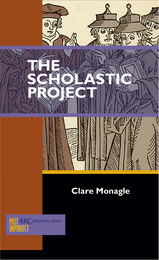
The Scholastic Project
Clare Monagle
Arc Humanities Press, 2017
This is a somewhat polemical, and very passionate, plea for more work not only about the house that scholasticism built, but those who were excluded from it.This book is the story of how scholastic theology defined this universal subject in terms of the reasonable white man and a catalogue of the exclusions which ensued. The categories of woman, Jew and heretic were core others against which ideal Christian subjectivity was implicitly defined, and this book shows just how constitutive these ‘others’ were for the production of orthodoxy in the Middle Ages.
[more]
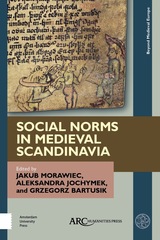
Social Norms in Medieval Scandinavia
Jakub Morawiec
Arc Humanities Press, 2019
New research methods allow us to explore how relics of the material culture of the medieval north can confront, corroborate, or disprove the depiction of social norms in the Old Norse-Icelandic literary corpus, which remains the most important source of our present-day knowledge of social development in the Viking Age and medieval Scandinavia. This interdisciplinary volume considers in depth how social values such as reputation, honour, and friendship, were integral to the development of rituals, customs, religion, literature, and language in the medieval North.
[more]
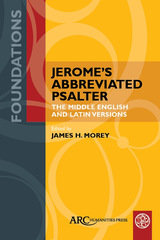
Jerome’s Abbreviated Psalter
The Middle English and Latin Versions
James H. Morey
Arc Humanities Press, 2019
Jerome’s Abbreviated Psalter was one of the most important collections of psalm verses in the Middle Ages. Commonly found in primers and books of hours, it was the primary medium for lay people to imitate the monastic divine office, even as it offered concessions to harsh personal circumstances. This edition presents the Middle English versions in parallel, followed by the Latin version in the Lincoln Thornton manuscript. An introductory review considers the psalter in general and the origins of abbreviated psalters in particular. Jerome’s Abbreviated Psalter is the most widespread text in the abbreviated psalter tradition and it illustrates an important aspect of lay devotional life from the eighth to the sixteenth century. The English versions contribute both to the history of English prose and to the history of biblical translation in English.
[more]
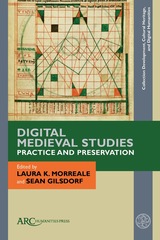
Digital Medieval Studies—Practice and Preservation
Laura K. Morreale
Arc Humanities Press, 2022
In the last decade, the terms “digital scholarship” and “digital humanities” have become commonplace in academia, spurring the creation of fellowships, research centres, and scholarly journals. What, however, does this “digital turn” mean for how you do scholarship as a medievalist? While many of us would never describe ourselves as “DH people,” computer-based tools and resources are central to the work we do every day in offices, libraries, and classrooms. This volume highlights the exciting ways digital methods are expanding and re-defining how we understand, represent, and teach the Middle Ages, and provides a new model for how this work is catalogued and reused within the scholarly community. The work of its contributors offers valuable insights into how “the digital” continues to shape the questions medievalists ask and the ways they answer them, but also into how those questions and answers can lead to new tools, approaches, and points of reference within the field of digital humanities itself.
[more]
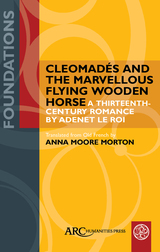
Cleomadés and the Marvellous Flying Wooden Horse
A Thirteenth-Century Romance by Adenet le Roi
Anna Moore Morton
Arc Humanities Press, 2024
A translation into English of Albert Henry’s definitive edition of Adenet le Roi’s Cleomadés, a story based on a tale from The One Thousand and One Nights.
Palace and pageantry, music and feast contribute to the poetic beauty of the tale, in which the hero Cleomadés and his sweetheart Clarmondine share love of an intensity evoking that of Layla and Majnun, of Isolde and Tristan, of Guinevere and Lancelot. When adventures with a mechanical flying horse separate them disastrously, the lovers undertake epic journeys and devise ingenious ruses to effect their eventual union. In medieval French tradition, their ardour is the consuming passion of the narrative. However, Cleomadés is replete with material on the status of women, of the disabled, of the insane, of religious toleration, of violent behaviour, of duty toward parents. Produced in Paris in 1285 under the patronage of Marie de Brabant, queen of France and daughter of Adenet’s first patron, Cleomadés crowns its author’s illustrious career.
[more]
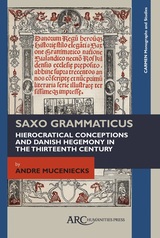
Saxo Grammaticus
Hierocratical Conceptions and Danish Hegemony in the Thirteenth Century
André Szczawlinska Muceniecks
Arc Humanities Press, 2017
Denmark of the twelfth to thirteenth centuries was a place of transitions, and this volume analyzes that period through the lens of the <i>Gesta Danorum </i>of Saxo Grammaticus and other sources. The <i>Gesta</i> defends not only hierocratic conceptions but the Danish hegemonic project in the Baltic - which was grounded in the crusade movements. Such movements are presented through complex language and imagery about a glorious past brought to bear on the projects in the thirteenth century while internal tensions strengthen the monarchic and ecclesiastical institutions.
[more]
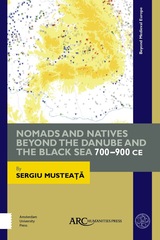
Nomads and Natives beyond the Danube and the Black Sea
700–900 CE
Sergiu Musteaţă
Arc Humanities Press, 2019
This book presents a reconstruction of the socio-economic, ethnic, cultural, and political history of the Carpathian-Danubian area in the eighth and ninth centuries at a period when nomadic peoples from the east including the Bulgars, Avars, and Khazars migrated here. The work is based on a comprehensive analysis of narrative and archaeological sources including sites, artefacts, and goods in the basin bordered by the Tisza river in the west, the Danube in the south, and the Dniestr river in the east, covering swathes of modern-day Romania, Moldova, Ukraine, Serbia, and Hungary.
[more]
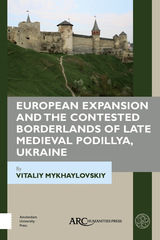
European Expansion and the Contested Borderlands of Late Medieval Podillya, Ukraine
Vitaliy Mykhaylovskiy
Arc Humanities Press, 2019
This book focuses on a key zone within the eastern frontier of medieval Europe: Podillya in modern-day Ukraine. Vitaliy Mykhaylovskiy offers a definitive guide to the region, which experienced great cultural and religious diversity, together with a continuous influx of newcomers. This is where Christian farmers met Muslim nomads. This is where German town residents and Polish nobles met urban Armenians and Tatars serving in the military. Podillya offers a unique opportunity to see interaction of so many peoples, principalities, and cultures – the eastern frontier of Europe at its most dynamic.
[more]
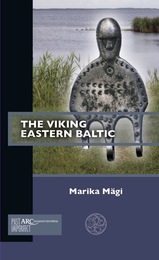
The Viking Eastern Baltic
Marika Mägi
Arc Humanities Press, 2019
This book demonstrates howcommunication networks over the BalticSea and further east were establishedand how they took different forms in thenorthern and the southern halves of theEastern Baltic. Changes in archaeologicalevidence along relevant trade routessuggest that the inhabitants of present-day Finland and the Baltic States weremore engaged in Viking easternmovement than is generally believed.
[more]
READERS
Browse our collection.
PUBLISHERS
See BiblioVault's publisher services.
STUDENT SERVICES
Files for college accessibility offices.
UChicago Accessibility Resources
home | accessibility | search | about | contact us
BiblioVault ® 2001 - 2024
The University of Chicago Press









